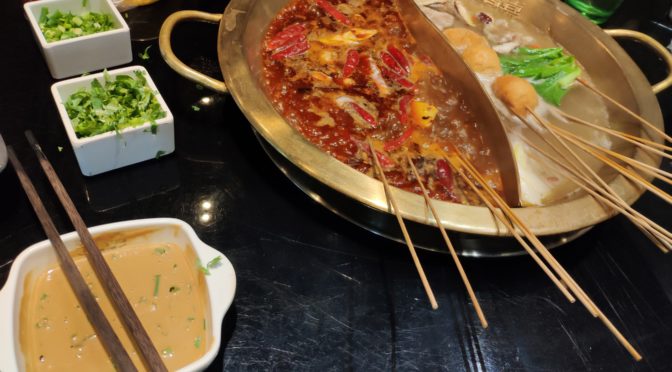According to the Chinese calendar, October 30th marked the first day of winter, according to The Beijing News. That means a few things: first, it’s going to get colder (but that comes as no surprise); two, it’s going to get windy; three, it’s going to get smoggy. Oh, and four, it means that the centralized heating is now turned on in the apartments.


The smog shouldn’t be as bad this year since, as of last year, Beijing and parts of northwest China, moved to natural gas for heating purposes. So we should see a few more clearer days here in Beijing. So now I wear a mask and turn on my air filter because, despite what some people say about those things not being efficient, I find that they help. Out of town, however, in cities south west of Beijing, smog will continue as they don’t have the same restrictions on emissions as the north does.


***
On the bright side of things, the one thing that the winter season does bring is hot pot (火锅 huo guo in Mandarin). Bearing no relation to the recently legalized substance in Canada, hot pot is actually a type of dining experience much like fondu.
I say “experience” because it is a style of eating rather than any one type of food. Hailing from Sichuan province, Hot Pot is often a communal affair that involves dipping meat and vegetables into boiling oil or water, one usually spicier than the other. The spread is huge and often spills off of the table itself and requires another cart to hold all of the food items offered.

You can inform the server how spicy you want things, anywhere from 不辣 bu la (no spice, but probably still a little bit spicy) to 中辣 zhong la (medium spicy) to 最辣 zui la (spicy) or 加麻加辣 jia ma jia la (extra spicy). I usually settle for a little bit spicy. The key to this spice are the red pepper chillies and the Sichuan peppercorns, the first is typical of a Western chilli pepper but the latter will literally make your mouth go numb.
The typical order of eating is meat first (beef, chicken, mutton), then noodles, then vegetables (Chinese spinach, lettuce, radishes, potatoes, etc.). The reason being is that the meat and oil combination is the heaviest and settles into the stomach while the vegetables are lighter and can sit on top of the heavier stuff. It’s also typical to have a beer or three while eating alongside hot water (Chinese people refuse to drink cold water).
But I especially enjoy the sesame paste that you get to dip your ingredients into. It’s the one time I’ll load up on garlic and oil to really let others know that what I’ve been eating.

So that’s one type of hot pot, where you order from a menu. But there’s another type of hot pot in which you take what you want from a fridge. Each item is skewered with one to three sticks and, when you’re finished, the restaurant tallies how many skewers you’ve had, each skewer being one kuai.

Each item is skewered with a number of sticks.
Each stick is one kuai.


And so we hope the winter won’t be too cold this year and that the air will be better. By the looks of things right now, the first desire has been met but the second has not. So keep warm and eat hot pot!
